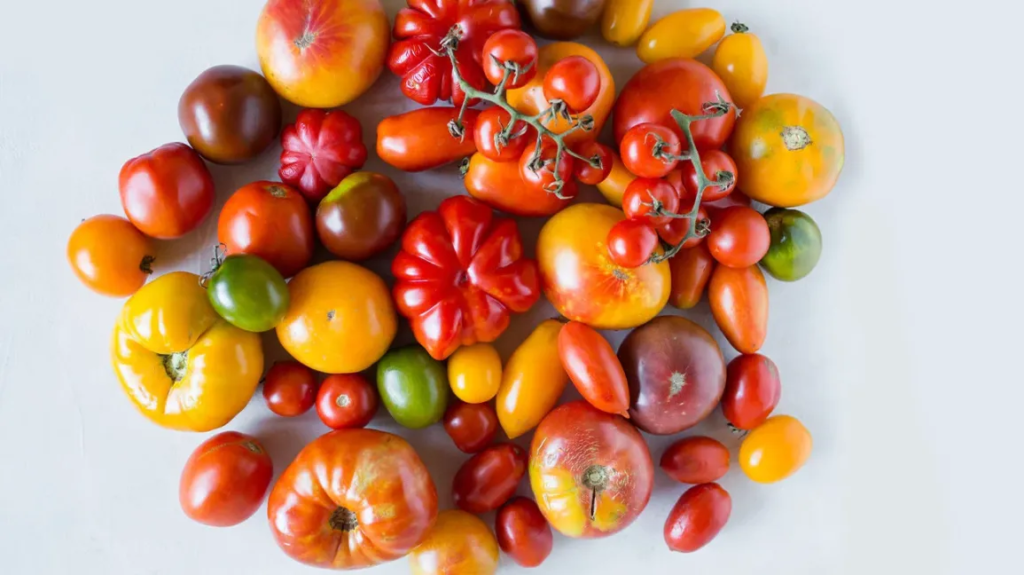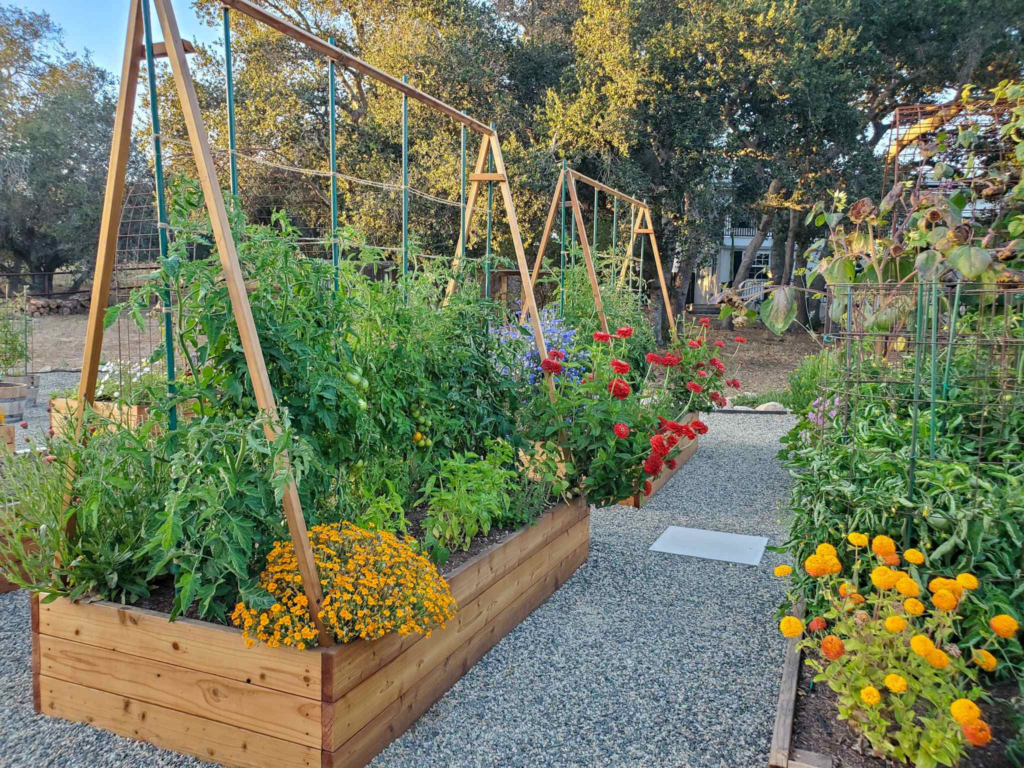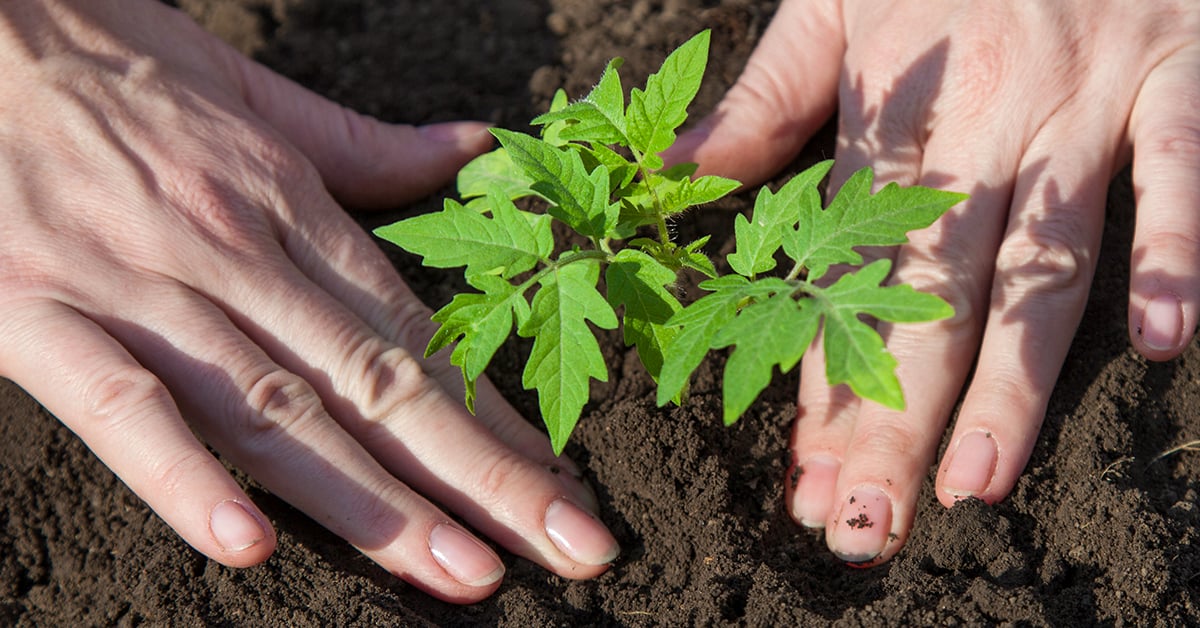April 20, 2024, by Benedict Vanheems
Tomatoes are a quintessential summer treat, bursting with flavor and a symbol of sunny days. Growing them can be incredibly rewarding, whether you’re a first-time gardener or an experienced grower looking to improve your techniques. In this Tomato Planting Masterclass, we’ll cover everything you need to get your plants off to a strong start—from sowing and planting to supporting and nurturing them for optimal growth.
1. Choosing the Right Tomato Varieties
Tomatoes come in an impressive range of varieties, offering options for every type of garden and every culinary need. From sweet cherry tomatoes to hearty beefsteaks and versatile paste tomatoes for sauces, there’s a variety for every taste. Some varieties are suited for warmer climates or greenhouses, while others thrive outdoors, even in cooler regions.

Tomatoes are also categorized by their growth habits—determinate (bush) tomatoes, which grow to a fixed size and produce all their fruit at once, and indeterminate (vining) tomatoes, which continue to grow throughout the season, producing a steady stream of fruit. Understanding the differences between these types helps you choose the right variety for your space and needs.
2. Starting Your Tomatoes
Tomatoes are sensitive to cold, so start seeds indoors 6-8 weeks before the last frost date. Use a general-purpose potting mix, avoiding expensive seed-starting mixes. Tomatoes are quick to germinate and need warmth—ideally around 70°F (21°C)—to thrive. If you can, place them on a heated mat or near a sunny window. Covering the seeds with clear plastic helps retain moisture until the seedlings emerge.

Once the seeds sprout, move the seedlings to a bright, warm location. If sunlight is limited, consider using grow lights to ensure they develop strong stems. Rotate pots daily to prevent the seedlings from leaning toward the light.
3. Potting and Growing On
Once seedlings have grown large enough, transfer them to individual pots. Handle them carefully by their leaves, not the stems, and plant them deeper than they were in their original pots, burying up to the first true leaves. This encourages stronger root development, making the plant more vigorous.
If your seedlings become tall and leggy, you can plant them deeper, and they’ll start growing roots along the buried stem. This technique helps the plant recover and thrive. Keep them in a sheltered spot until the weather warms enough for outdoor transplanting.
4. Hardening Off Your Tomatoes
Before planting outdoors, tomatoes need to be gradually acclimatized to the elements—a process known as hardening off. Start by placing your seedlings in a sheltered location for an hour or two on mild days, and gradually increase the time they spend outside each day over the course of 1-2 weeks.
5. Planting Tomatoes Outdoors
Tomatoes thrive in full sun, so choose a location that receives at least 6-8 hours of direct sunlight daily. Prepare the soil with nutrient-rich compost or well-rotted manure. When planting, ensure the hole is deep enough to bury the plant up to its true leaves, and space plants about 18 inches apart to allow for healthy growth.
You can even grow tomatoes in containers or hanging baskets, provided you use high-quality potting mix and ensure regular watering. Tomatoes in containers will need more frequent attention, especially in hot or dry conditions.
6. Supporting Your Tomatoes
Tomatoes need support to keep them upright and healthy. This helps prevent disease, promotes better air circulation, and keeps fruit off the ground.
For indeterminate (vining) tomatoes, use stakes or string supports to encourage vertical growth. Attach the string to the greenhouse frame or a sturdy post, looping it around the plant as it grows. If you’re growing outdoors, bamboo canes or strong posts work well.
For determinate (bush) tomatoes, a simple tomato cage is usually sufficient. These plants are more compact and need less maintenance. Cages provide structure and prevent the plant from sprawling.

7. Watering and Feeding Your Tomatoes
Consistency is key when watering tomatoes. Keep the soil evenly moist, and avoid letting it dry out completely. When the plants start flowering, begin applying organic tomato feed to encourage strong fruit development. Water directly at the base of the plant to avoid wetting the leaves, which can lead to disease.
8. Looking Ahead
In the next Tomato Planting Masterclass, we’ll dive deeper into watering techniques, pruning, pest control, and more tips for ensuring a successful tomato harvest. Stay tuned for more expert advice to help you grow tomatoes with superior flavor and yield!
By following these steps, you’ll be well on your way to growing thriving tomato plants that will reward you with delicious, home-grown fruit all season long. Happy gardening!
